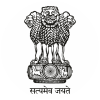Pages from a Kharosthi manuscript
The political economy of Higher Education shows that an important priority in the recent period has been to modernise our systems, which, unfortunately led to urbanisation of our space, leading to a quick rise of the middle class constituency and its strong desire to see avenues of upward mobility expanded. As the new urban middle class grew in power, they increasingly threw their weight behind educational reform, so that basic and secondary education has had, over the last few decades, a steady growth among the classes that could afford it. And, as their numbers grew, the supply of students who were capable of, and interested in, getting a higher education also grew. Ultimately this growing demand put pressure on all governments to expand all institutions of advanced education. But there has been very little realization that these institutions owe their rise to the common man and that it is: therefore, necessary to contribute to their welfare in as many ways as possible. The special efforts that CIIL has made in protecting, promoting and documenting our little known linguistic heritage by archiving 118 Indian languages, including 80 tribal languages, has been a step in that direction. The harnessing of higher education to the broader needs of national socio-cultural and economic development should be the focus of the present times.



